
CURATOR’s EYE
Bringing Light into Form - Interview with Shinji Fujino
Follow TRiCERA on Instagram and check out our creative artists
5%OFF & free shipping 1st purchase
FIRSTART5
10%OFF 2nd purchase after 1st purchase!
Welcome to TRiCERA
Hi there! We are pleased to have you here 🎉
Could you please describe yourself?
Guest
Marcel Duchamp is known for having invented the concept of "contemporary art.
His works are famous for their esoteric nature, but it is also true that they have had a profound influence on contemporary living artists.
He is also one of the most important artists in history in that through the creation of Dadaism and other forms of art, he created a way of looking at art that was fundamentally differentiated from the "modern art" that preceded it.
In this issue, we will look at Duchamp's works, and try to unravel why he is the father of modern art. We will also take a look at his works and try to unravel why he is the father of contemporary art.
Marcel was born into a cultured family in Normandy, France.
His maternal grandfather, Emile Frédéric-Nicole, was a copperplate engraver and painter, and Duchamp's grandfather's work filled the house.
The Duchamps were a very cultured and cultured and wealthy family, enjoying chess in their spare time, reading, painting, and music.
In fact, Duchamp had seven brothers (one of whom died at an early age), three of whom, other than Duchamp himself, were also successful artists. Jacques Villon, Raymond Duchamp-Villon, and Suzanne Duchamp-Crotty are three of them.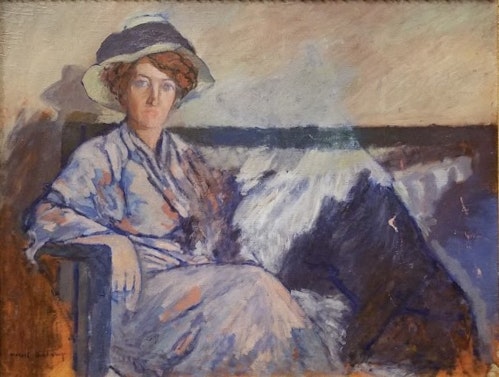
Portrait of Yvonne Duchamp-Villon, 1907
At the age of eight, Yvonne Duchamp-Villon followed her older brothers to a boarding school in Rouen.
She was not a particularly outstanding student at school, but she excelled in mathematics and twice received awards in the subject.
His older brother Jacques had also been drawing and painting since he was a student, and Duchamp studied hard to emulate him. The Impressionist and Late Impressionist styles were popular at school, and Duchamp also painted Impressionist-style landscapes in his early years.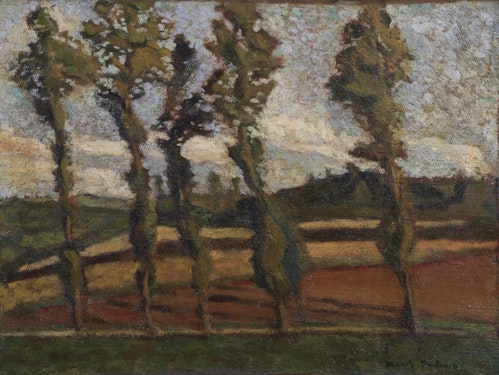
Landscape, 1908
In his early work, Duchamp was particularly influenced by the late Impressionist Odilon Redon, whom he later revealed in an interview.
From 1904 to 2005, Duchamp studied painting techniques at the Académie Julian, but he said he was more addicted to playing billiards than attending classes. From this time on, he began to produce radical caricatures using puns and visual devices, and this motivation related to wordplay is seen throughout his life.
Through the introduction of his brother Jacques, he exhibited his work at the Salon d'Automne in 1908.
At the time, his works were painted in a style influenced by Fauvism and Cubism.
At that time, Guillaume Apollinaire, an art critic and poet with whom he would later form a friendship, harshly criticized Duchamp's nudes, saying, "How ugly they are!
This exhibition marked the beginning of a lifelong friendship with Francis Picabia in addition to Apollinaire.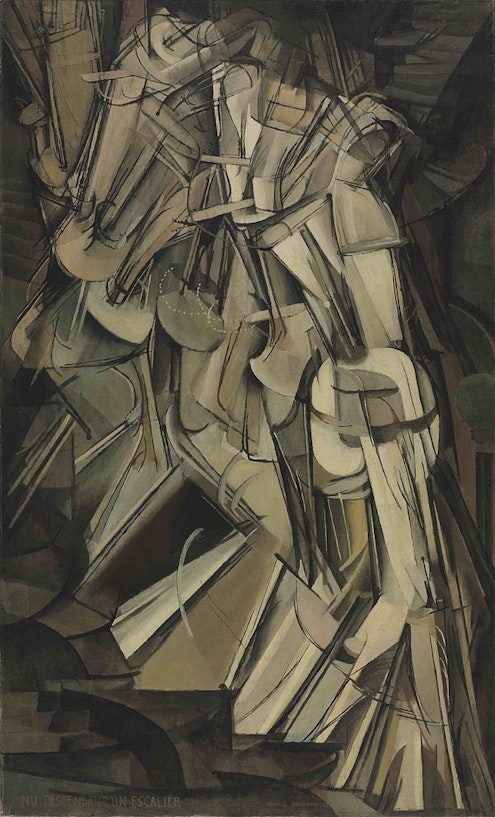
Woman Descending a Staircase No. 02
Duchamp's early masterpiece, "Woman Descending a Staircase No. 02," exhibited in 1912, was included in the "Independent Exhibition.
At the time, Albert Grèze, a self-proclaimed member of the Cubist movement, offered to withdraw the painting from the exhibition. There was no jury at the Independent Exhibition, and Grez had no right to force Duchamp to withdraw his work.
This incident led Duchamp to give up on cubism and find his own style.
Around 1912, while staying in Munich, Germany, Duchamp began drawing his masterpiece "The Bride Naked by Her Bachelors, Even" and working on the concept of "The Big Glass.
At the same time, it is said that he went to the Alte Pinakothek in Munich every day to see the works of Lucas Cranach. Cranach's restrained ochre and brown colors are said to have influenced the color range later used by Duchamp.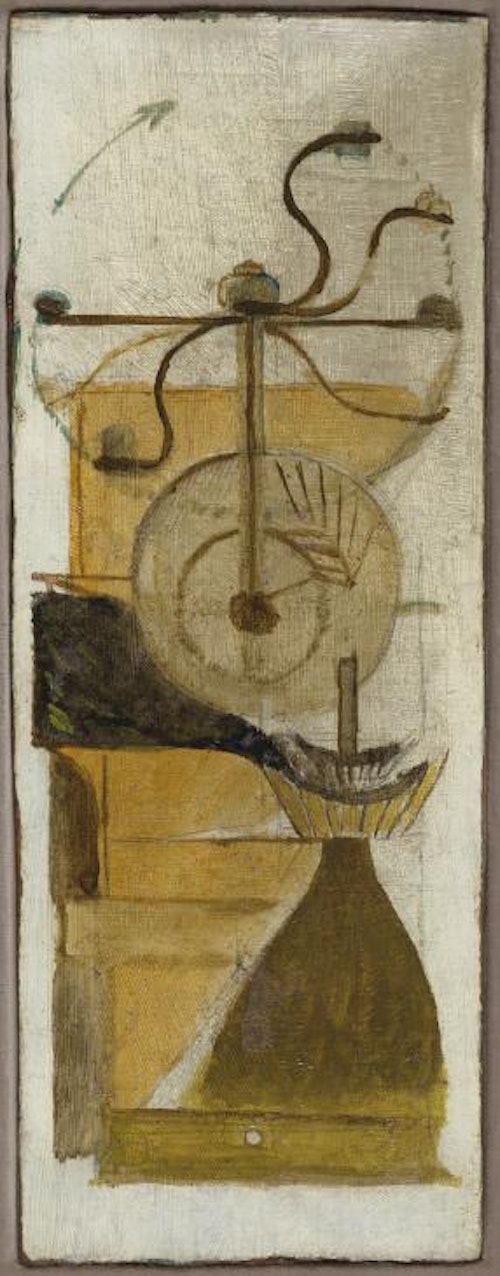
Coffee mill, 1911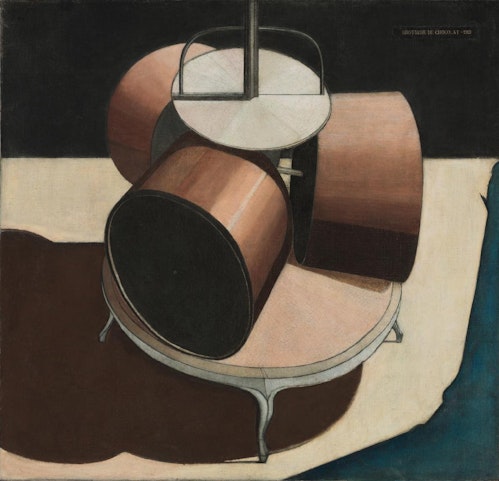
Chocolate grinder, 1912
From 1912 onward, he produced only a conceptual sketch of "The Big Glass" and a small number of canvases with minimal "painterly" elements.
Fountain" shocked the art world when it was unveiled at the Society of Independent Artists in New York in 1917.
Signed "R. Mutt" on an overturned male urinal, the work was protested as "not a work of art," even though the exhibition, as before, was not juried.
Eventually rejected by the association, the work was withdrawn from the exhibition, and Duchamp was forced to withdraw from the Association of Independent Artists.
The work caused a stir among Dadaist artists, who valued irrationality, nonsense, and illogic.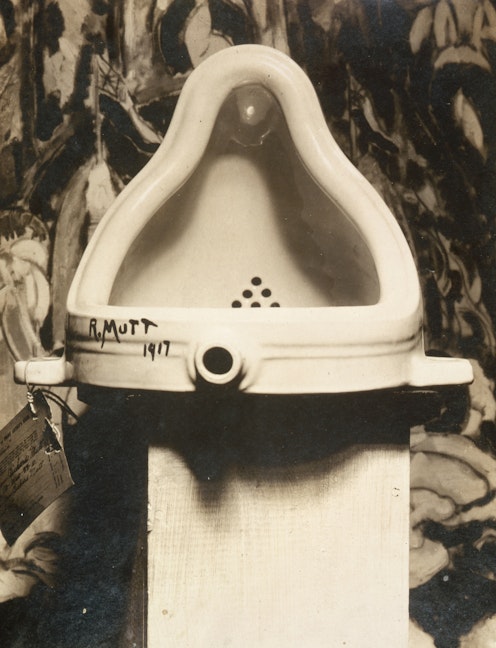
Fountain, 1917
At the beginning of the 20th century, artists were engaged in expressive activities based on the premise that "art is the only work of art created by the artist's own hands, and that it is beautiful and noble.
Duchamp questioned the concept of art that had been taken for granted and challenged the trend toward unconditional worship of works of art.
He exhibited ubiquitous ready-made objects as works of art and called them "ready-made.
He dares to choose "indifferent" objects that are neither particularly beautiful nor impressive, and presents them in the exhibition space.
The viewer then begins to attempt to decipher their meaning.
Duchamp considered this act to be art.
L.H.O.O.Q., 1919
The fact that he raised the question "What is art?" with his "ready-made" and created a new definition of art, "the art of thinking," is the reason why he is called the "father of modern art.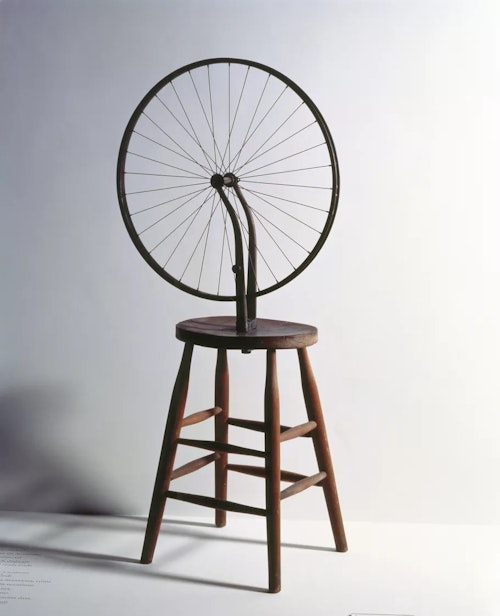
Bicycle Wheel, 1913
In his later years, Duchamp abandoned production, even abandoning his masterpiece, The Great Glass, midway through its creation.
It is said that he devoted himself to chess as a chess player after that.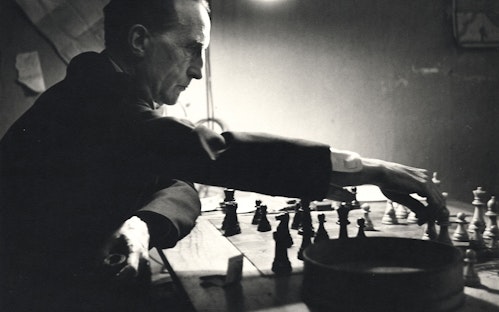
At the core of his life was his enjoyment of "thinking and expressing, and thinking and interpreting expression.
It is not always the case that we can get some aesthetic impression from looking at a readymade work or a large piece of glass by itself.
Duchamp attempted to renew the meaning of "what is art?"
Considering that this question has been passed down to most of today's contemporary artists, his production of works of art, and not only the works themselves, but also his attitude and the thinking behind them, can still be considered a singular point in the history of art.
Also read
Please also read this article on Marcel Duchamp and contemporary art.
There are many kinds of contemporary art! Explanation of Contemporary Art by Genre
What is contemporary art all about? The more you know, the more interesting it is!
10 Key Figures for Understanding Contemporary Art
100 People for Understanding Contemporary Art: Overseas Artists (1)
100 People to Understand Contemporary Art: Overseas Artists (2)
- Discounts such as members-only secret sales and coupons
- Create My Collection by registering your favorite artists
- Receive updates on popular artists, exhibitions, and events
- Receive a weekly newsletter with selected art
- Personal Assessment to find out what kind of art you like.
Please register as a member for free and receive the latest information.
Free Member Registration

Writer
TRiCERA ART
Marcel Duchamp is known for having invented the concept of "contemporary art.
His works are famous for their esoteric nature, but it is also true that they have had a profound influence on contemporary living artists.
He is also one of the most important artists in history in that through the creation of Dadaism and other forms of art, he created a way of looking at art that was fundamentally differentiated from the "modern art" that preceded it.
In this issue, we will look at Duchamp's works, and try to unravel why he is the father of modern art. We will also take a look at his works and try to unravel why he is the father of contemporary art.
Marcel was born into a cultured family in Normandy, France.
His maternal grandfather, Emile Frédéric-Nicole, was a copperplate engraver and painter, and Duchamp's grandfather's work filled the house.
The Duchamps were a very cultured and cultured and wealthy family, enjoying chess in their spare time, reading, painting, and music.
In fact, Duchamp had seven brothers (one of whom died at an early age), three of whom, other than Duchamp himself, were also successful artists. Jacques Villon, Raymond Duchamp-Villon, and Suzanne Duchamp-Crotty are three of them.
Portrait of Yvonne Duchamp-Villon, 1907
At the age of eight, Yvonne Duchamp-Villon followed her older brothers to a boarding school in Rouen.
She was not a particularly outstanding student at school, but she excelled in mathematics and twice received awards in the subject.
His older brother Jacques had also been drawing and painting since he was a student, and Duchamp studied hard to emulate him. The Impressionist and Late Impressionist styles were popular at school, and Duchamp also painted Impressionist-style landscapes in his early years.
Landscape, 1908
In his early work, Duchamp was particularly influenced by the late Impressionist Odilon Redon, whom he later revealed in an interview.
From 1904 to 2005, Duchamp studied painting techniques at the Académie Julian, but he said he was more addicted to playing billiards than attending classes. From this time on, he began to produce radical caricatures using puns and visual devices, and this motivation related to wordplay is seen throughout his life.
Through the introduction of his brother Jacques, he exhibited his work at the Salon d'Automne in 1908.
At the time, his works were painted in a style influenced by Fauvism and Cubism.
At that time, Guillaume Apollinaire, an art critic and poet with whom he would later form a friendship, harshly criticized Duchamp's nudes, saying, "How ugly they are!
This exhibition marked the beginning of a lifelong friendship with Francis Picabia in addition to Apollinaire.
Woman Descending a Staircase No. 02
Duchamp's early masterpiece, "Woman Descending a Staircase No. 02," exhibited in 1912, was included in the "Independent Exhibition.
At the time, Albert Grèze, a self-proclaimed member of the Cubist movement, offered to withdraw the painting from the exhibition. There was no jury at the Independent Exhibition, and Grez had no right to force Duchamp to withdraw his work.
This incident led Duchamp to give up on cubism and find his own style.
Around 1912, while staying in Munich, Germany, Duchamp began drawing his masterpiece "The Bride Naked by Her Bachelors, Even" and working on the concept of "The Big Glass.
At the same time, it is said that he went to the Alte Pinakothek in Munich every day to see the works of Lucas Cranach. Cranach's restrained ochre and brown colors are said to have influenced the color range later used by Duchamp.
Coffee mill, 1911
Chocolate grinder, 1912
From 1912 onward, he produced only a conceptual sketch of "The Big Glass" and a small number of canvases with minimal "painterly" elements.
Fountain" shocked the art world when it was unveiled at the Society of Independent Artists in New York in 1917.
Signed "R. Mutt" on an overturned male urinal, the work was protested as "not a work of art," even though the exhibition, as before, was not juried.
Eventually rejected by the association, the work was withdrawn from the exhibition, and Duchamp was forced to withdraw from the Association of Independent Artists.
The work caused a stir among Dadaist artists, who valued irrationality, nonsense, and illogic.
Fountain, 1917
At the beginning of the 20th century, artists were engaged in expressive activities based on the premise that "art is the only work of art created by the artist's own hands, and that it is beautiful and noble.
Duchamp questioned the concept of art that had been taken for granted and challenged the trend toward unconditional worship of works of art.
He exhibited ubiquitous ready-made objects as works of art and called them "ready-made.
He dares to choose "indifferent" objects that are neither particularly beautiful nor impressive, and presents them in the exhibition space.
The viewer then begins to attempt to decipher their meaning.
Duchamp considered this act to be art.
L.H.O.O.Q., 1919
The fact that he raised the question "What is art?" with his "ready-made" and created a new definition of art, "the art of thinking," is the reason why he is called the "father of modern art.
Bicycle Wheel, 1913
In his later years, Duchamp abandoned production, even abandoning his masterpiece, The Great Glass, midway through its creation.
It is said that he devoted himself to chess as a chess player after that.
At the core of his life was his enjoyment of "thinking and expressing, and thinking and interpreting expression.
It is not always the case that we can get some aesthetic impression from looking at a readymade work or a large piece of glass by itself.
Duchamp attempted to renew the meaning of "what is art?"
Considering that this question has been passed down to most of today's contemporary artists, his production of works of art, and not only the works themselves, but also his attitude and the thinking behind them, can still be considered a singular point in the history of art.
Also read
Please also read this article on Marcel Duchamp and contemporary art.
There are many kinds of contemporary art! Explanation of Contemporary Art by Genre
What is contemporary art all about? The more you know, the more interesting it is!
10 Key Figures for Understanding Contemporary Art
100 People for Understanding Contemporary Art: Overseas Artists (1)
100 People to Understand Contemporary Art: Overseas Artists (2)
- Discounts such as members-only secret sales and coupons
- Create My Collection by registering your favorite artists
- Receive updates on popular artists, exhibitions, and events
- Receive a weekly newsletter with selected art
- Personal Assessment to find out what kind of art you like.
Please register as a member for free and receive the latest information.
Free Member Registration

Writer
TRiCERA ART